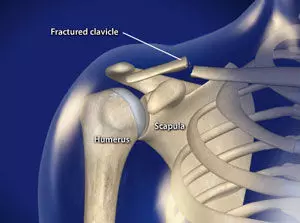MIPO more advantageous than ORIF in treatment of displaced midshaft clavicle fractures: study
- byDoctor News Daily Team
- 09 November, 2025
- 0 Comments
- 0 Mins

Wang et alconducted a study to evaluate the clinical efficacy and advantages of Minimally Invasive Plate Osteosynthesis (MIPO) for the treatment of displaced midshaft clavicle fractures (DMCFs). A retrospective case–control study was conducted involving 79 patients with DMCFs. Patients were divided into two groups based on the surgical technique: MIPO (n = 32) and Open Reduction and Internal Fixation (ORIF) (n = 47). Key parameters—including operative time, intraoperative blood loss, incision length, complications, patient satisfaction, and functional recovery outcomes—were compared. The key findings of the study were: • Baseline characteristics were comparable between the two groups, including age (41.66 ± 11.32 years vs. 42.53 ± 11.18 years, p = 0.731), sex distribution (male/ female: 18/14 vs. 31/16, p = 0.383), BMI (23.24 ± 2.21 vs. 23.86 ± 1.74, p = 0.170), smoking history (25.0% vs. 29.8%, p = 0.641), alcohol use (12.5% vs. 21.3%, p = 0.316), hypertension (18.8% vs. 10.6%, p = 0.798), diabetes mellitus (15.6% vs. 14.9%, p = 0.929), injury mechanism (p = 0.406), AO/OTA fracture classification (p = 0.635), and Robinson classification (p = 0.536). No statistically significant differ¬ences were observed in any of these parameters. • Compared to the ORIF group, the MIPO group demonstrated significantly shorter operative time (54.22 ± 5.14 min vs. 61.15 ± 6.01 min, p < 0.001), reduced intraoperative blood loss (45.44 ± 4.27 mL vs. 52.81 ± 6.60 mL, p < 0.001), and shorter incision length (6.42 ± 0.48 cm vs. 12.25 ± 1.60 cm, p < 0.001). • Postoperative supraclavicular nerve injury was less frequent in the MIPO group (12.5% vs. 38.3%, p < 0.001) and patient satisfaction was higher (90.6% vs. 72.3%, p = 0.021). • No significant differences were observed in functional outcomes, as assessed by the Disabilities of the Arm, Shoulder and Hand (DASH) and Constant-Murley scores. The authors concluded – “Both MIPO and ORIF are effective surgical options for the management of DMCFs. Although functional recovery outcomes were comparable between the two techniques, MIPO demonstrated clear advantages in terms of reduced surgical trauma, accelerated postoperative recovery, lower complication rates, and higher patient satisfaction. These findings support the wider clinical adoption of MIPO, particularly in healthcare settings that emphasize minimally invasive approaches and enhanced recovery protocols.” Further reading: Clinical outcomes of minimally invasive plate osteosynthesis in the management of displaced midshaft clavicle fractures: a case-control study Wang et al. BMC Musculoskeletal Disorders (2025) 26:905 https://doi.org/10.1186/s12891-025-08995-0
Disclaimer: This website is designed for healthcare professionals and serves solely for informational purposes.
The content provided should not be interpreted as medical advice, diagnosis, treatment recommendations, prescriptions, or endorsements of specific medical practices. It is not a replacement for professional medical consultation or the expertise of a licensed healthcare provider.
Given the ever-evolving nature of medical science, we strive to keep our information accurate and up to date. However, we do not guarantee the completeness or accuracy of the content.
If you come across any inconsistencies, please reach out to us at
admin@doctornewsdaily.com.
We do not support or endorse medical opinions, treatments, or recommendations that contradict the advice of qualified healthcare professionals.
By using this website, you agree to our
Terms of Use,
Privacy Policy, and
Advertisement Policy.
For further details, please review our
Full Disclaimer.
Recent News
Kerala waives Rs 10 lakh discontinuation penalty f...
- 09 November, 2025
Jharkhand health dept announces SOP for ICU and CC...
- 09 November, 2025
Doctors oppose Punjab govt's decision to set up me...
- 09 November, 2025
Biocon gets 2 USFDA observations for Visakhapatnam...
- 09 November, 2025
Daily Newsletter
Get all the top stories from Blogs to keep track.


0 Comments
Post a comment
No comments yet. Be the first to comment!